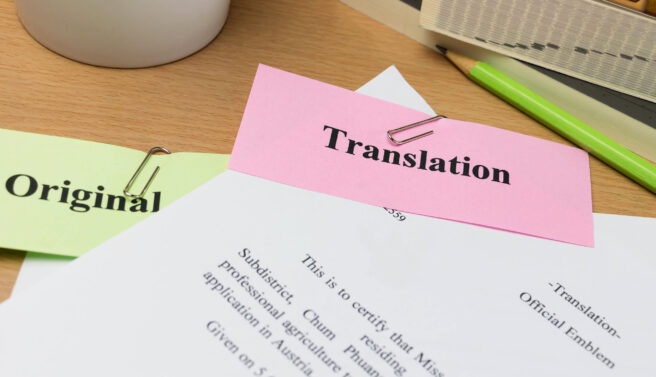Businesses have realized the importance of going global and targeting a wider audience. This has led to an increase in translation services for businesses looking to expand their reach. However, translating your content into another language is not as simple as it seems. There are many challenges that you need to consider before embarking on such a project. In this blog post, we will discuss five of the most important challenges that you need to be aware of when translating to any language.
Importance of Accurate Translations
One of the most important challenges when translating to any language is ensuring that your translations are accurate. This is because inaccuracies can lead to misunderstandings and could potentially damage your business’s reputation. To avoid such problems, it is important to work with a professional translation service that has experience in translating to the target language. They will be able to ensure that your translations are accurate and free of any errors.
Another challenge that you need to consider is cultural differences. This is because certain words and phrases may have different meanings in different cultures. For example, something that may be considered offensive in one culture may not be offensive in another. As a result, it is important to take into account cultural differences when translating your content into another language. A
What are the common problems in translating to any language?
#1
One of the first challenges that you need to be aware of is the different word order in other languages. For example, in English, we typically use a subject-verb-object structure. However, this is not the case in all languages. In German, for instance, the word order is usually reversed, with the verb coming before the subject. This can obviously lead to some confusion and mistranslations if you’re not careful.
#2
Another challenge that you might face is false cognates. These are words that look similar in two languages but actually have different meanings. A famous example of this is the Spanish word “embarazada” which means “pregnant” in English. However, if you translate it directly into English, it actually means “embarrassed”. As you can see, this can obviously lead to some confusion and mistranslations.
#3
When translating to any language, it is also important to be aware of different dialects. This is because certain words and phrases may mean something different in a particular dialect. For example, in the UK there are many different dialects, such as Cockney, Scouse, and Geordie. Each of these has their own unique vocabulary and way of speaking. As a result, when translating your content into English, you need to be aware of which dialect you are targeting.
#4
Another challenge that you might face when translating to any language is idioms. These are expressions that cannot be translated literally into another language. For example, the English idiomatic expression “to kill two birds with one stone” would be translated literally into French as “tuer deux oiseaux avec une pierre”. However, this doesn’t make any sense in French and would obviously need to be translated differently.
#5
When translating marketing or advertising collateral, it’s critical that the cultural nuances of the target audience are taken into account – something that can be easily missed by those who are not native to the country or culture. Even something as seemingly innocuous as colors can have different meanings from one culture to another. For example, white is often associated with purity and innocence in the West, but in many Eastern cultures, white is the color of mourning.
In order to avoid any misunderstandings or mistranslations, it is important to work with a professional translation service that has experience in translating to the target language. They will be able to ensure that your translations are accurate and free of any errors. Additionally, they will also be able to take into account cultural differences and idioms when translating your content. By working with a professional translation service, you can rest assured that your content will be accurately translated into the target language.
What are the factors that we need to consider when we are trying to translate words and sentences?
There are many challenges that need to be considered when translating to any language. Some of these challenges include: word order, false cognates, dialects, and idioms. It is important to take all of these factors into account in order to avoid any misunderstandings or mistranslations. When translating marketing or advertising collateral, it is also critical to consider the cultural nuances of the target audience. The best way to ensure accuracy when translating to any language is to work with a professional translation service. They will be able to take all of these challenges into account and deliver accurate translations.
What are the limitations in translation?
While there are many challenges that need to be considered when translating to any language, it is still possible to produce accurate translations. However, it is important to work with a professional translation service in order to ensure the best results. They will be able to take all of the challenges into account and deliver accurate translations.
Contact eTranslation Services for professional and accurate translations today!
eTranslation Services is a professional translation service that has experience in translating to any language. We can ensure that your translations are accurate and free of any errors. Additionally, we will also be able to take into account cultural differences and idioms when translating your content. Contact us today for a free quote!



